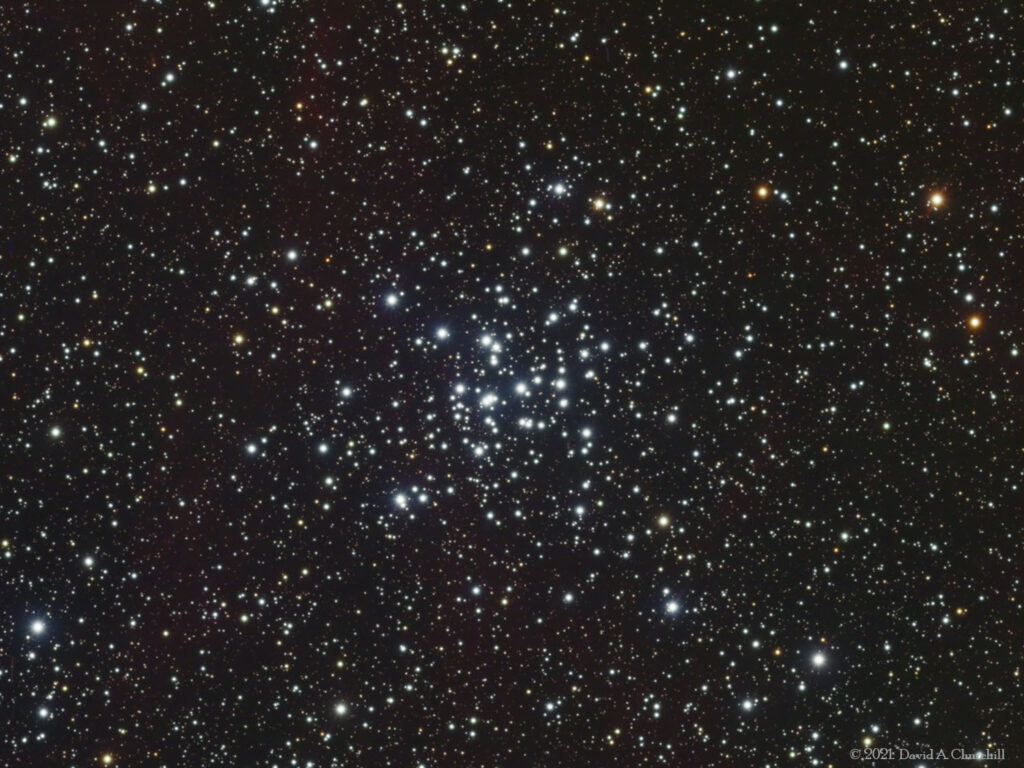Messier 36
Open Cluster, Auriga
- Description
- Technical
- Links
Messier 36 or M36, also known as NGC 1960, is an open cluster of stars in the somewhat northern Auriga constellation. It was discovered by Giovanni Batista Hodierna before 1654, who described it as a nebulous patch. The cluster was independently re-discovered by Guillaume Le Gentil in 1749, then Charles Messier observed it in 1764 and added it to his catalogue. It is about 1,330 pc (4,340 light years) away from Earth. The cluster is very similar to the Pleiades cluster (M45), and if as far away it would be of similar apparent magnitude.
This cluster has an angular diameter of 10′ and a core radius of 3.2′. It has a mass of roughly 746 M☉ and a linear tidal radius of 10.6 ± 1.6 parsecs (34.6 ± 5.2 ly). Based upon photometry, the age of the cluster has been estimated by Wu et al. (2009) as 25.1 Myr[1] and 26.3+3.2
−5.2 Myr by Bell et al. (2013). The luminosity of the stars that have not yet depleted their lithium implies an age of 22±4 Myr, in good agreement with these older estimates.
M36 includes ten stars with a visual magnitude brighter than 10, and 178 down to magnitude 14. 38 members display an infrared excess, with one being particularly high. There is one candidate B-type variable star, of 9th magnitude.
Telescope: Astro Physics 175EDF f8.3
Mount: Astro Physics 3600GTO “El Capitan”
Camera: SBIG STT8300
Guider: Mini Borg 50 / SBIG STi
L: 55×5 mins = 275 mins, R: 24×5 mins = 120 mins, G: 24×5 mins = 120 mins, B: 24×5 mins = 120 mins
Total Imaging Time: 10h 40m
Data Imaged remotely over 3 nights during February 2021.
Data acquisition & Processing by David Churchill.
None

